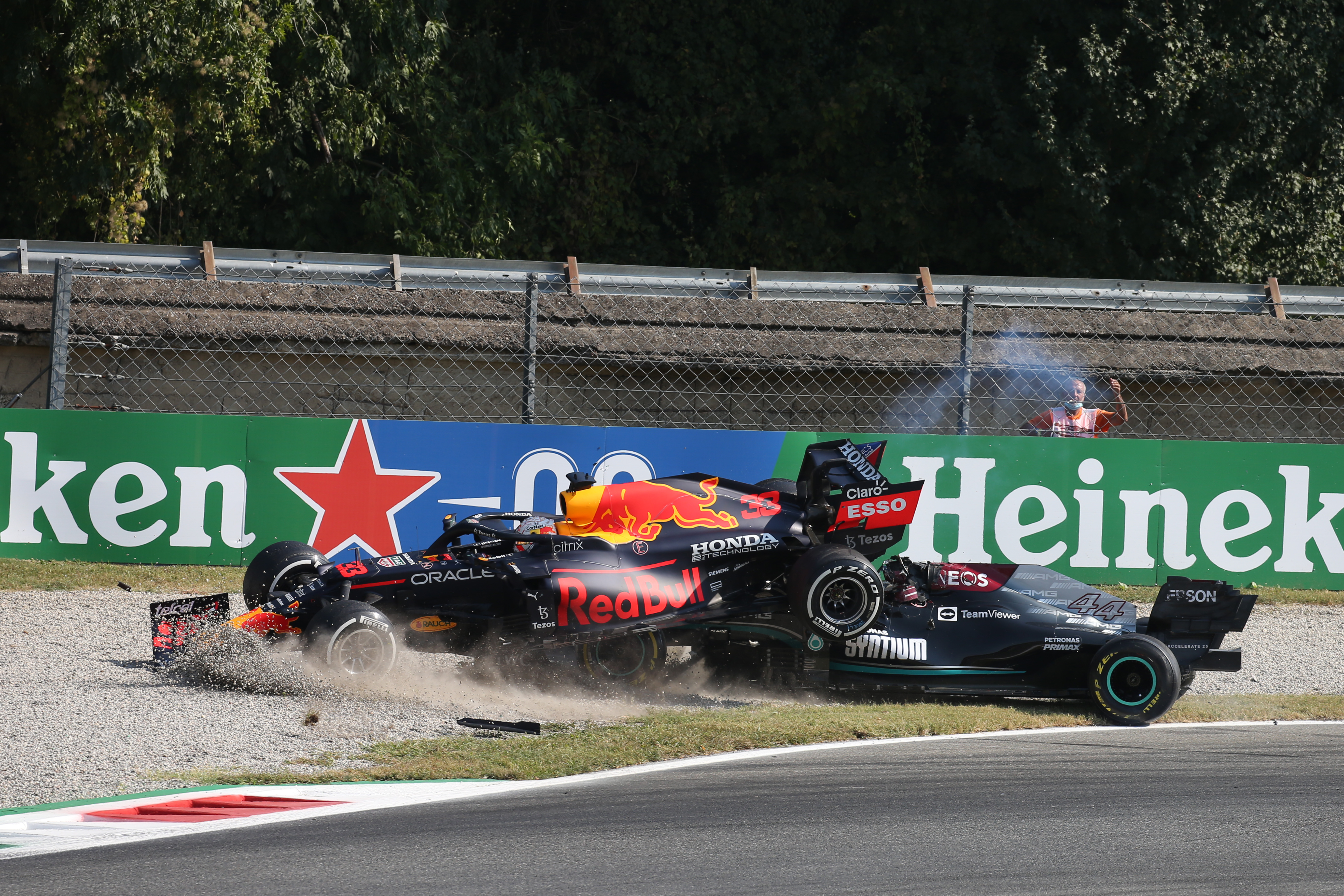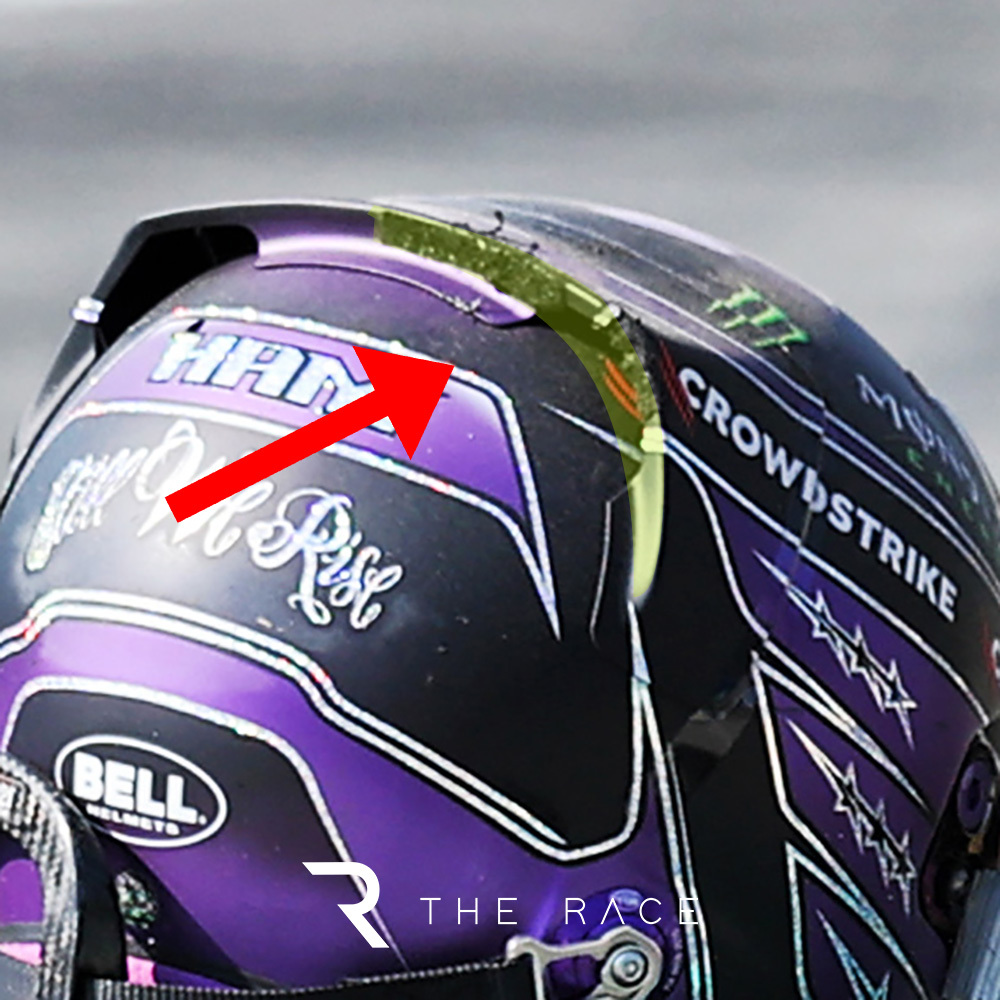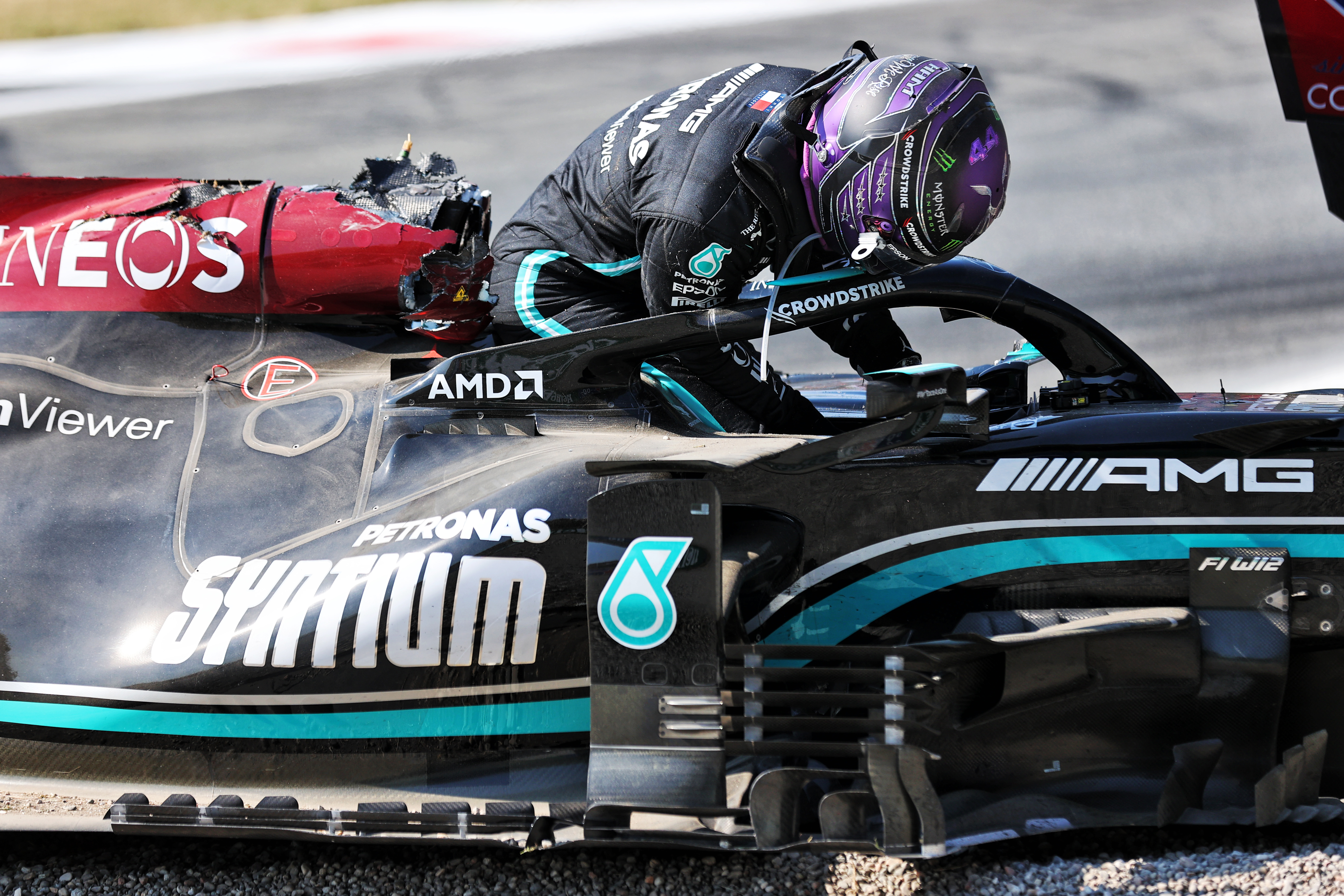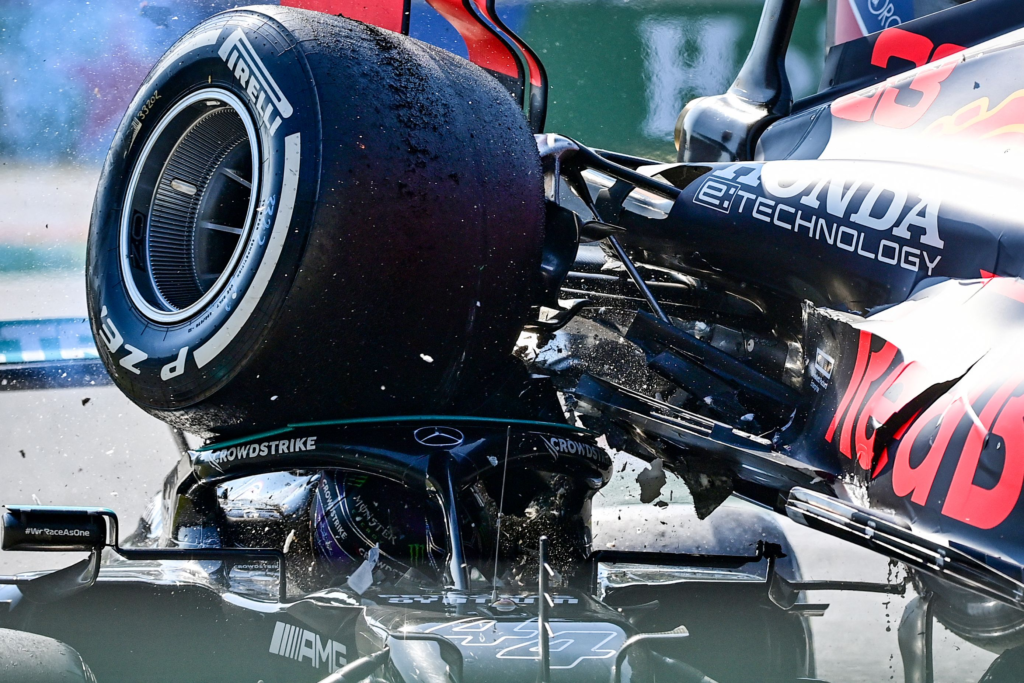Up Next

The halo driver protection device was rightly lauded for the role it played in keeping Lewis Hamilton safe in his crash with Max Verstappen in the Italian Grand Prix.
Hamilton said the halo driver protection device saved his life after Verstappen’s Red Bull ended up on top of the Mercedes at the first chicane – the most dramatic element of which was captured in a screenshot of slow-motion footage shared by both F1 and the FIA (above).
F1 cars have the halo and many other devices and designs because of the FIA’s relentless pursuit of improved safety.
In the interest of that pursuit, it is worth reflecting on the key factors that saved Hamilton and also what can be better, because this crash also underlined why the halo is a limited safety measure – albeit one with a very good limit.
Though other factors in car design will almost certainly have played a part in Hamilton emerging unscathed, some of the clear contributors were the roll hoop, the halo, the headrest and his crash helmet.
Verstappen’s trajectory after hitting the kerb and Hamilton’s car sent the Red Bull up and into the roll hoop and the halo – striking Hamilton’s helmet with the underside of the right tyre on the way – before coming to rest on the front-right corner.
It is the roll hoop that is struck first, not the halo. First Verstappen’s right wheel hits it from the left and then the rear of the floor strikes it as well, before the entire right-rear corner of the Red Bull ends up riding the roll structure.
The roll hoop played an important initial role as it prevented Hamilton’s head from being hit by anything from behind.
The roll structure is primarily designed to help prevent injury to the driver in the event the car goes upside-down but to achieve that purpose it must satisfy vertical and longitudinal load tests at two separate points, in one case handling a load of more than 100kN vertically downward.
During the tests, these peak loads must be maintained for five seconds and during this time there can be no failure of any part of the monocoque or any attachment between it and the roll structure.
Once the Red Bull ricochets off the roll hoop the halo and the side impact structure are also called upon to withstand the force of the car as it lands and the halo visibly plays a crucial role in protecting Hamilton’s helmet.
It is hit by the floor, which then splinters around the halo, and by the right rear tyre as the car climbs over the Mercedes.
“You can see Max’s car ride up the Mercedes and without the halo, there would’ve been no protection for the weight of that wheel coming down on top of Lewis,” said Red Bull boss Christian Horner.
“So I think the halo has again demonstrated its purpose in Formula 1.”
However, the inherent design of the halo with its open top meant Hamilton’s head was still exposed.
And the awkward and unusual nature of this accident meant the parts hitting the halo could not be deflected entirely, hence the bottom of Verstappen’s wheel dipping inside and striking Hamilton’s head.

The safety standards of F1-spec crash helmets are therefore important because the halo did not protect Hamilton entirely.
“I don’t think I’ve ever been hit on the head by a car before,” he said, before adding that “my head really is quite far forward” in images showing the blow he still received from Verstappen’s right rear tyre.
In 2019, the FIA introduced a new helmet safety standard that was mandatory for helmet manufacturers to follow.
The advantages of the new standard included advanced ballistic protection, increased energy absorption and an extended area of protection for drivers – and the manufacturers the FIA’s researchers worked closely with included Hamilton’s long-time supplier Bell.
Only a full FIA investigation will reveal exactly which features helped and how, but the new helmets have extended areas of protection on the sides to ensure the management of energy in a crash matches the headrests correctly while the shell of the helmet uses advanced composite materials that help it resist being crushed and penetrated.

There were toughened test processes introduced, including a ‘crush’ test of a 10kg weight falling 5.1 metres onto the helmet, while the helmets must also withstand a 225g metal projectile fired at 250km/h and a 4kg impactor dropped onto helmet at 7.7 m/s.
Converting this into the weight and force of an F1 car landed atop another and a rear tyre hitting a helmet is impossible without detailed data but Hamilton’s helmet was able to withstand its impact.
Additionally, the floor of the Red Bull broke and splintered as it made contact with the halo – there is no sign this directed debris at Hamilton’s helmet but the additional work to protect it against penetration from projectiles would have been an added defence if it had.
After the race, FIA race director and safety delegate Michael Masi referenced the various safety features that combine in such an accident, “be it halo, be it equipment, be it car design, everything, there’s always that constant evolution of improving safety as a whole”.
The FIA has collected all the available data from this crash as it does with any “unusual” accident that is not a high-speed impact, which are automatically assessed.
“Our safety department does look at them in detail, investigate and see what we can learn and what we can improve for the future,” said Masi.

“That’s how we have a whole lot of the safety features that we have today, and will continue to evolve into the future.
“We’re already collecting all of the data. So we have all of the information.
“And that will all go to our safety department together with any photographs, anything else that we have along the way.”









